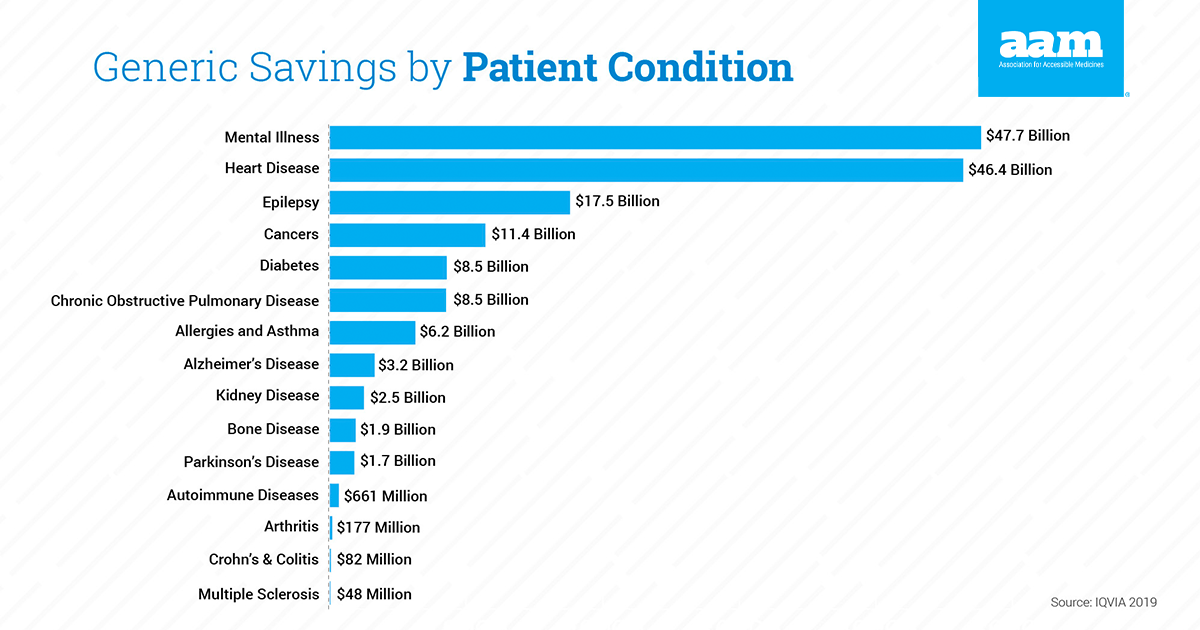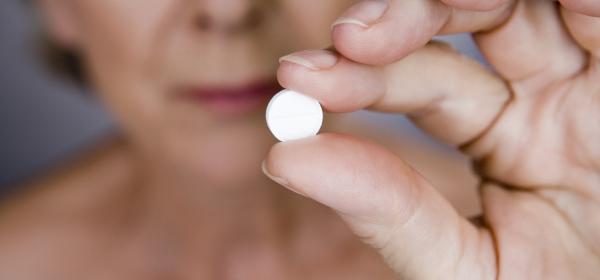How much do you save when you treat your health conditions using generic drugs?
The “Case for Competition”—the 11th annual edition of our Savings and Access Report—explores how generics and biosimilars bring down overall health care costs. To supplement the data in the report, the Association for Accessible Medicines (AAM) has also gathered information specific to 18 conditions. Some highlights:
- Generics saved patients with cancer $11.4 billion in 2018—including $6.8 billion for breast cancer, $2.5 billion for colorectal cancer and $1.5 billion for blood cancer.
- Generics saved patients with diabetes $8.6 billion in 2018. The 87% of diabetes patients who have hypertension saved an additional $8.4 billion on their treatment for that condition.
- Generics saved patients with allergies and asthma $6.3 billion in 2018, and savings for the past 10 years total $32.4 billion (allergies) and $42 million (asthma).
- Alzheimer’s affects 5.7 million people in the U.S., and generic savings for them totaled $462 million in 2018; savings for the past decade total $18.7 billion.
- Generic prescription drugs can slow the progress of Amyotrophic Lateral Sclerosis (ALS; also known as Lou Gehrig’s disease). These patients saved $68 million in 2018, and savings for the past 10 years total $294 million.
- Generics saved patients with arthritis $177 million in 2018. Nearly half of arthritis patients also have cardiovascular disease, and they saved an additional $859 million by taking generics for it.
To compile data on savings by condition, AAM contracted with health policy consulting firm Avalere to map products to specific conditions.*
According to the Access & Savings Report, generic savings totaled $293 billion in 2018. Savings over the past decade came to $2 trillion. Medicare and Medicaid saved $90.3 billion and $46.8 billion, respectively, through the use of generics in 2018. Nine out of 10 prescriptions filled in the United States are generic, and yet they account for just 22% of total prescription medicine spending. The average generic primary copay was $5.63—substantially less than $40.65, the average primary copay for brand-name drugs.
A Generic Summer Savings Tour: How Did Your State Do?
When patients and providers opt for generic and biosimilar alternatives instead of brand-name prescription and biologic medications, the savings really add up—for any condition being treated.

By Sara Skubikowski, AAM Senior Director of Strategic Alliances
*Avalere conducted the clinical review by assigning each generic product to a list of medical conditions. Using high-quality and reliable drug information databases (for example, Lexicomp Online and Micromedex 2.0) and expertise from a clinical pharmacist, Avalere mapped the products to medical conditions using their approved therapeutic indications. The generic products were further stratified by assigning comorbidities using published epidemiological data to determine the three most common associated medical conditions. This approach allowed for an accounting of the patient savings for each medical condition. As a general rule, direct savings for any of the listed medical conditions includes all products with an indication for that medical condition. As such, the savings may be driven by any product with an indication for that specified condition and not necessarily the most common treatment. Savings do not account for the frequency in which providers prescribe each product for an approved or unapproved medical condition.


